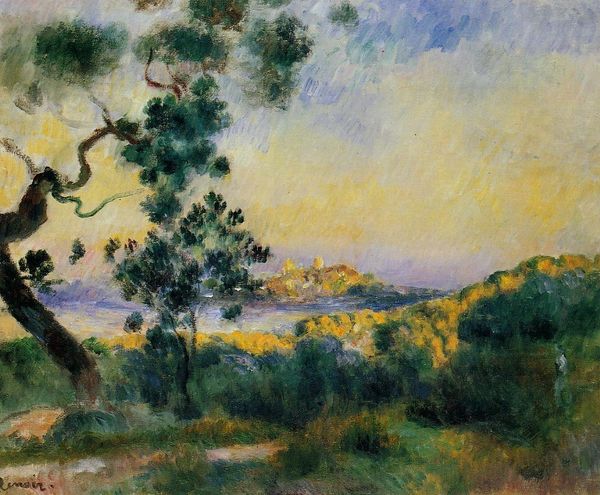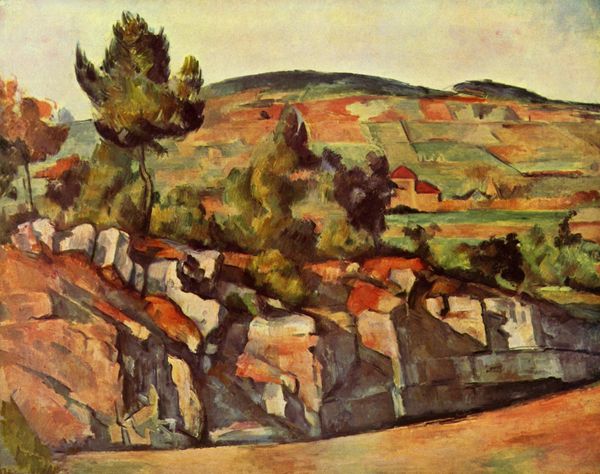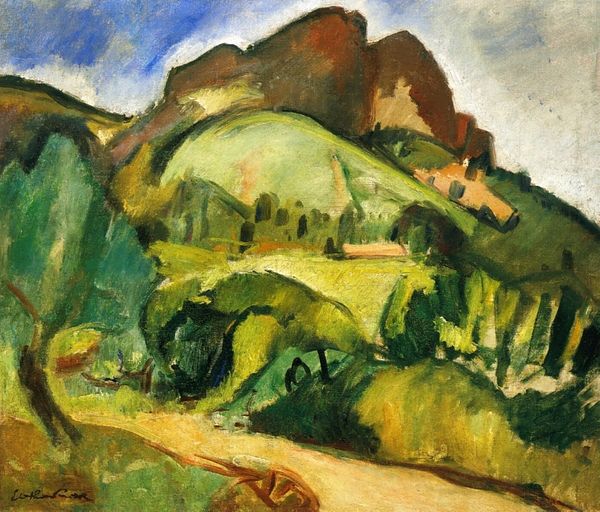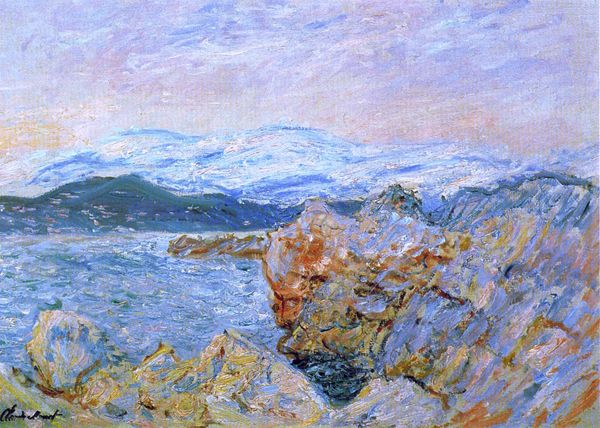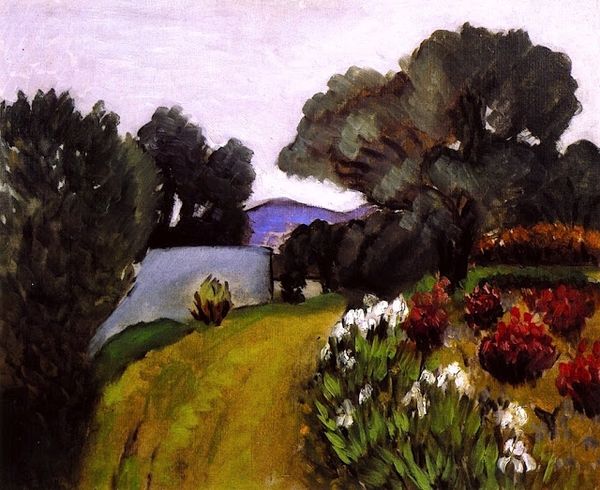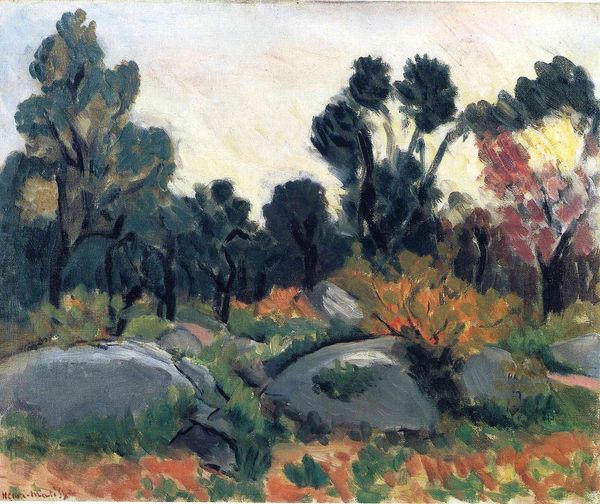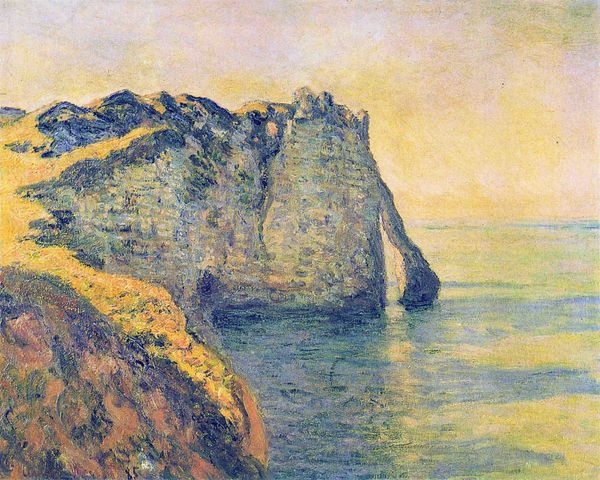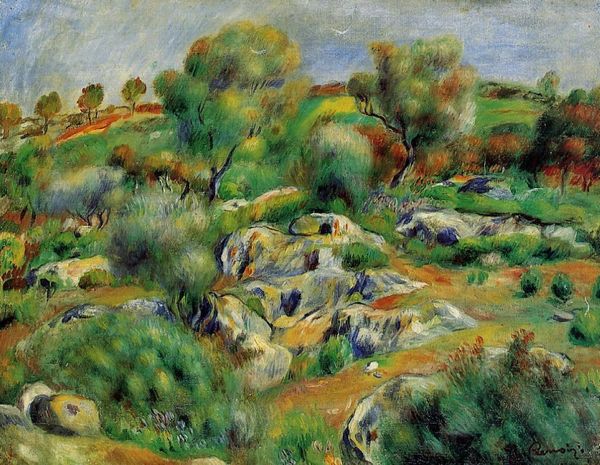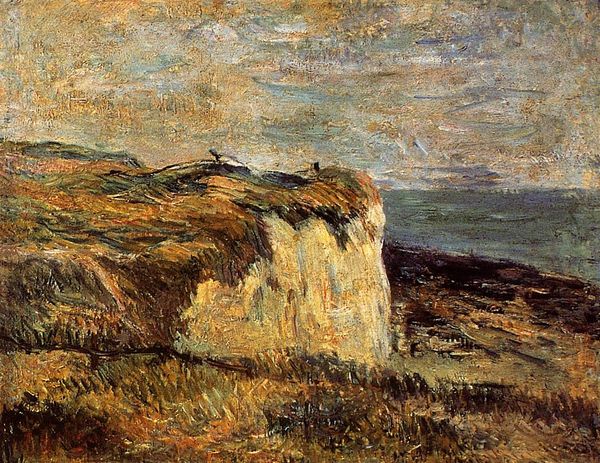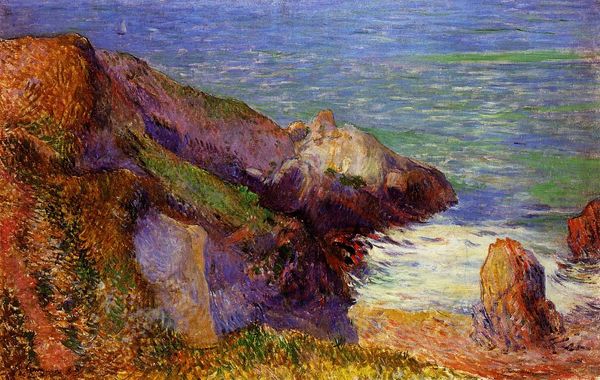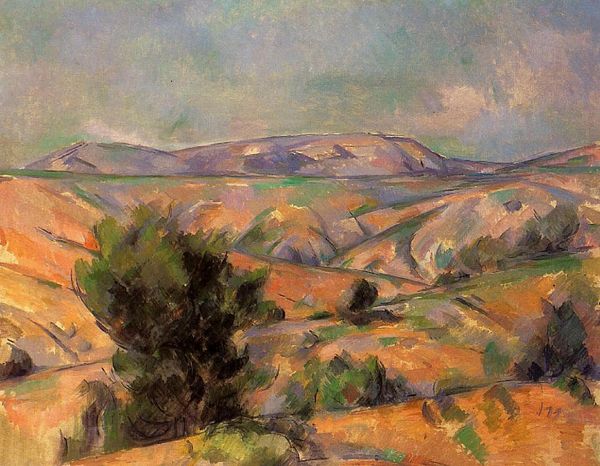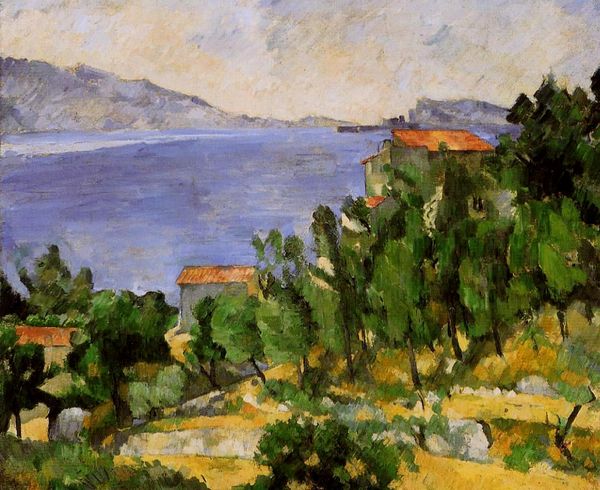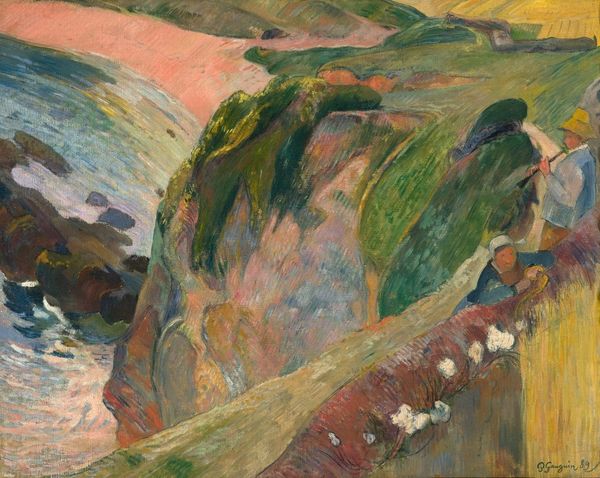
painting, oil-paint
#
painting
#
impressionism
#
oil-paint
#
landscape
#
impressionist landscape
#
nature
#
oil painting
#
rock
#
mountain
#
seascape
#
cityscape
#
post-impressionism
Dimensions: 71 x 73 cm
Copyright: Public domain
Paul Cézanne made this oil painting, Rocks at L'Estaque, sometime in the late 19th century. Cézanne, working outside Paris, was interested in how the formal qualities of painting could challenge the conventions of the art world. Looking at this landscape, we can see Cézanne's focus on the underlying structure of the scene. Instead of trying to perfectly capture the way things look, he used brushstrokes to build up the shapes and volumes of the rocks, trees, and sea. This was at a time when the French Academy still held sway over the art world, valuing realistic depictions and historical or mythological scenes. Artists like Cézanne, however, were part of a growing avant-garde, experimenting with new ways of seeing and representing the world. To understand Cézanne's project, we can look at exhibition records, critical reviews, and the writings of artists and intellectuals of the time. By studying these sources, we can gain insight into how Cézanne and his contemporaries were pushing the boundaries of art and challenging the established norms of the art institutions.
Comments
No comments
Be the first to comment and join the conversation on the ultimate creative platform.
